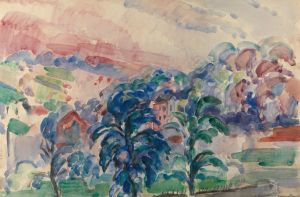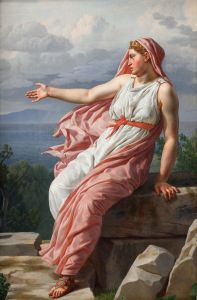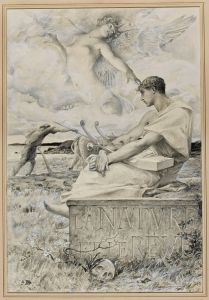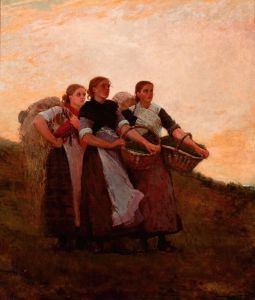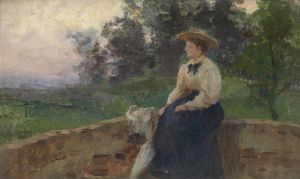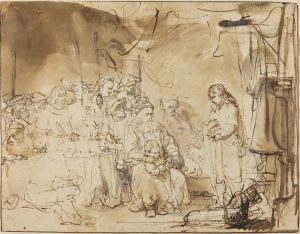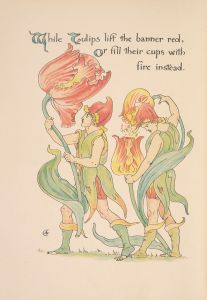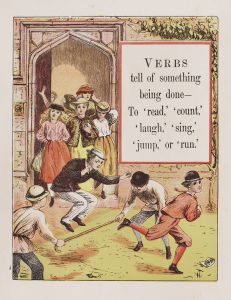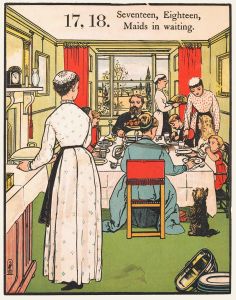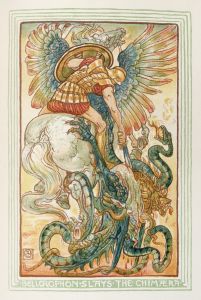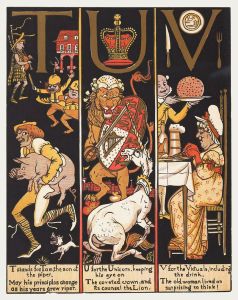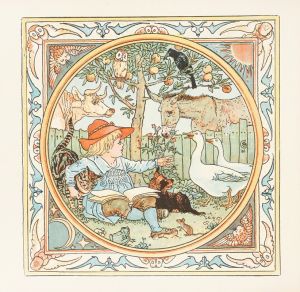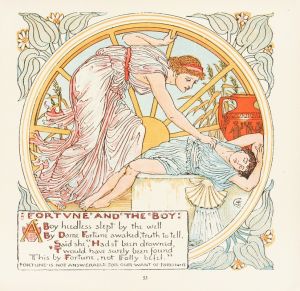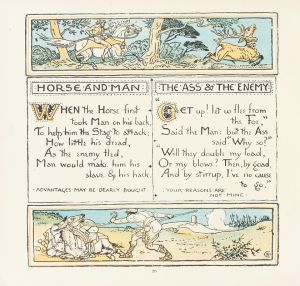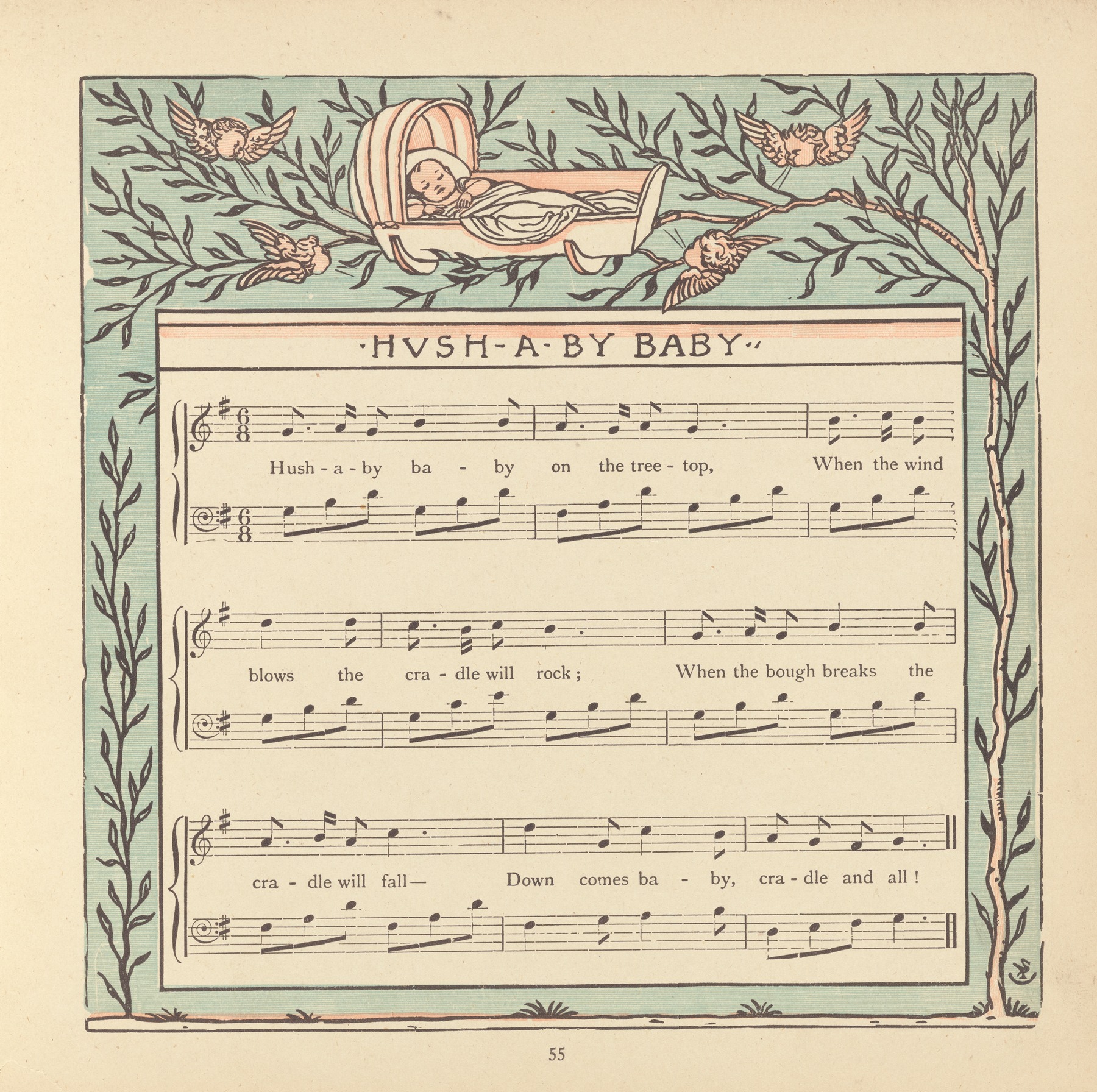
Hush-a-by Baby
A hand-painted replica of Walter Crane’s masterpiece Hush-a-by Baby, meticulously crafted by professional artists to capture the true essence of the original. Each piece is created with museum-quality canvas and rare mineral pigments, carefully painted by experienced artists with delicate brushstrokes and rich, layered colors to perfectly recreate the texture of the original artwork. Unlike machine-printed reproductions, this hand-painted version brings the painting to life, infused with the artist’s emotions and skill in every stroke. Whether for personal collection or home decoration, it instantly elevates the artistic atmosphere of any space.
Walter Crane (1845–1915) was a prominent English artist and book illustrator, known for his contributions to the Arts and Crafts Movement and his work in children's literature. One of his notable works is the illustration "Hush-a-by Baby," which is part of his series of nursery rhyme illustrations.
Walter Crane's "Hush-a-by Baby" is an illustration that depicts the well-known nursery rhyme "Rock-a-bye Baby." This rhyme, which dates back to the late 18th century, tells the story of a baby in a cradle that rocks on a treetop. Crane's interpretation of this rhyme is characteristic of his style, which often included detailed, whimsical, and richly colored images that captivated both children and adults.
Crane's illustration for "Hush-a-by Baby" features a serene and idyllic scene. The central focus is the baby in a cradle, which is suspended from a tree branch. The cradle is ornately decorated, reflecting Crane's attention to detail and his ability to infuse his works with a sense of fantasy and charm. Surrounding the cradle, the tree is lush with leaves and flowers, creating a natural and comforting environment. The background often includes additional elements such as animals or other figures, adding depth and narrative to the scene.
Walter Crane's work was heavily influenced by the Pre-Raphaelite Brotherhood and the Aesthetic Movement, which emphasized beauty and detailed craftsmanship. His illustrations often included elements of medieval and classical art, as well as influences from Japanese prints, which were popular in Europe during his time. This blend of styles is evident in "Hush-a-by Baby," where the composition, use of color, and intricate patterns showcase Crane's unique artistic vision.
Crane was also a socialist, and his political beliefs sometimes influenced his work. He believed in the power of art to improve society and often incorporated themes of social justice and equality into his illustrations. While "Hush-a-by Baby" is primarily a whimsical and gentle image, it is part of a larger body of work that reflects Crane's commitment to creating art that was accessible and meaningful to a broad audience.
Throughout his career, Walter Crane produced numerous illustrated books, including "The Baby's Opera" (1877), "The Baby's Bouquet" (1878), and "The Baby's Own Aesop" (1887). These works were highly regarded for their artistic quality and their ability to engage young readers. "Hush-a-by Baby" is a testament to Crane's skill as an illustrator and his dedication to creating enchanting and enduring images for children's literature.
In summary, Walter Crane's "Hush-a-by Baby" is a beautifully crafted illustration that captures the essence of a beloved nursery rhyme. Through his detailed and imaginative style, Crane created a timeless image that continues to be appreciated for its artistic merit and its ability to evoke a sense of wonder and comfort.





